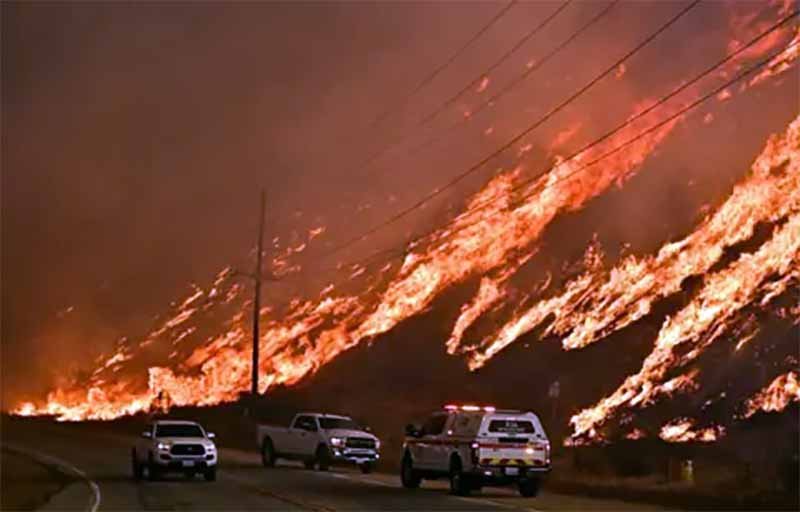A fast-spreading wildfire erupted on Wednesday in Los Angeles County, forcing tens of thousands to evacuate and adding to California’s growing battle with devastating wildfires.
The Hughes Fire, which started near Castaic Lake about 45 miles northwest of Los Angeles, has quickly consumed over 10,000 acres. Firefighters are working tirelessly to prevent further devastation as the blaze spreads rapidly.
Evacuations and Immediate Impact
Approximately 31,000 residents in the surrounding areas are under mandatory evacuation orders. Another 23,000 residents have been warned to be prepared for potential evacuation, according to Los Angeles County Sheriff Robert Luna.
Evacuees include nearly 500 inmates from a nearby correctional facility. Local authorities are coordinating efforts to ensure safety and minimize loss.
The fire, fueled by dry brush and winds of up to 30 mph, is advancing steadily. So far, no homes or businesses have been destroyed. However, the risk of the fire jumping critical barriers, such as Castaic Lake, remains a pressing concern.
Local residents were seen taking last-minute precautions, including hosing down their homes and gardens. Many others, faced with thick smoke and intense flames, rushed to leave the area.
One resident described the terrifying scene while evacuating: “It looked like we were driving into hell.”
Firefighting Efforts and Containment Progress
Firefighting crews have been working around the clock to contain the Hughes Fire. Los Angeles County Fire Chief Anthony Marrone expressed optimism, citing favorable weather conditions and access to critical resources.
By early Thursday, the fire was reported to be 14% contained, according to Cal Fire, California’s wildfire agency. Aircraft have been deployed to drop water and flame retardants, while ground crews focus on creating firebreaks to prevent further spread.
Unlike the catastrophic Palisades and Eaton fires earlier this month, the Hughes Fire is benefiting from lower wind speeds. The availability of helicopters and planes has also been a game-changer for firefighters.
Climate Change and Fire Risks
Experts have repeatedly warned that climate change is intensifying wildfire risks in California. Rapid swings between wet and dry seasons have created vast amounts of tinder-dry vegetation, making regions like Los Angeles County highly vulnerable.
Dana Dierkes, spokesperson for the Angeles National Forest, highlighted the severity of the issue. “We don’t have a fire season in California anymore; we have a fire year. These dry conditions and winds are a dangerous combination,” she said.
The region remains under a red flag warning, signaling extreme fire risk due to low humidity and strong winds. The notorious Santa Ana winds are expected to persist through Thursday, further complicating firefighting efforts.
Community and Statewide Preparations
Governor Gavin Newsom has stepped in to address the crisis by signing an executive order to allocate resources for flood and landslide preparation in fire-affected areas.
Crews are now focused on filling sandbags and fortifying vulnerable zones. With rain in the forecast this weekend, concerns are growing about potential mudslides and flooding in burned areas.
Burned landscapes are particularly prone to erosion, and rain following wildfires often exacerbates the risks. State officials are working to mitigate these secondary disasters before they occur.
A Glimmer of Hope
Despite the challenges, firefighting crews remain hopeful about containing the Hughes Fire. Their efforts have already slowed the fire’s progress, and they are optimistic about preventing it from reaching the scale of earlier catastrophic blazes.
As Los Angeles County battles this latest disaster, community resilience and coordinated action are proving essential in protecting lives and property.


